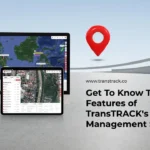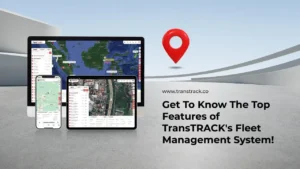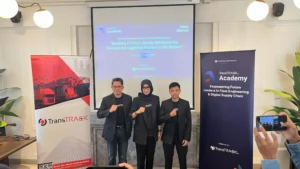Car Light Codes You Need to Know Before Driving!
Posted on June 6, 2024 by Nur Wachda Mihmidati

In the modern automotive world, indicator lights on a vehicle’s dashboard are more than just decorative lights. They serve as an important code language to communicate conditions and potential problems that may occur with your vehicle. Understanding the meaning and interpretation of each indicator light can be key to maintaining the optimal health and performance of your vehicle. Let’s explore through this article TransTRACK about these car light codes, and how they can help in keeping your mobility unhindered.
Java Island Regional Turn Signal Signals
In Indonesia, especially in Java and Sumatra, the use of turn signals by drivers has some customs and conventions that can be slightly different depending on the region. The following is a general explanation of the use of turn signals on the island of Java:
Right turn signal light on
In Java, when the right turn signal is on, it consistently indicates that the driver intends to make a right turn. This signal is important to alert motorists behind them to take appropriate action, such as giving way or adjusting their speed.
Left turn signal on
In contrast, an illuminated left turn signal indicates the driver’s intention to turn to the left. This use of the left turn signal is important to ensure good coordination between surrounding drivers, so that they can respond in a timely and safe manner to the driver’s turning intention.
Clear and consistent use of turn signals is essential to reduce road confusion and promote traffic safety. Adherence to traffic rules and compliance with driving etiquette are also highly recommended to create a safe and efficient traffic environment in the Java Island region.
Turn Signal Signals in the Sumatra Island Region
On the island of Sumatra, the use of turn signals has some conventions similar to Java but with some contextual differences:
Right turn signal light on
When the right turn signal is on in Sumatra, it generally signals the driver’s intention to turn right. In addition, in some areas, the right turn signal may also be used to signal to the driver behind them that it is safe to pass on the right, especially on narrow roads or when traffic conditions permit.
Left turn signal light on
An illuminated left turn signal indicates that the driver intends to turn left. This is similar to the usage in Java, where the left turn signal is used to signal to surrounding motorists the intention to turn left or pull over to the left side of the road.
Timeliness and clarity in the use of turn signals are key to ensuring safety and avoiding confusion on the road. Drivers on the island of Sumatra are expected to understand and follow local rules and practices regarding the use of turn signals to support smooth traffic flow and safety.
Hazard Light Signals
Hazard light signals, also known as flashing lights, are used to alert other drivers and other road users of an emergency situation or imminent danger. In Indonesia, including on Java Island and Sumatra Island, hazard lights are usually turned on under the following conditions:
Emergency or Accident Conditions
When a vehicle is involved in an accident or other incident that requires immediate attention from surrounding drivers, the hazard lights will be turned on to indicate that there is an immobilized vehicle or an obstacle on the road.
Facing Sudden Danger
Hazard lights can also be used when the driver has to perform sudden braking or faces sudden hazards such as heavy rain, dense fog, or slippery road conditions that require extra attention from other motorists.
Use During Emergency Parking
In some situations, hazard lights are used when a vehicle is stopped or emergency parked on the side of the road or in unexpected places to alert other drivers of the vehicle’s presence.
The use of hazard lights is essential for safety and avoiding additional accidents. When seeing hazard lights activated in front of another vehicle, drivers behind it are expected to adjust their speed and behavior, and consider giving more space or taking other precautions according to the situation.
Headlight Cues
Headlight signals on vehicles contain several meanings that are important in road safety and communication:
Headlights On (High Beam)
Used when light conditions are low or dark to provide maximum illumination to the front. Drivers should turn off these headlights when a vehicle is coming from the opposite direction or when behind another vehicle so as not to distract other drivers.
Low Beam Headlights
This is the standard mode for everyday use on the highway. The low headlights provide sufficient illumination to the front without distracting drivers in the opposite direction or those in front.
Automatic Headlights
Many modern vehicles are equipped with sensors that activate the headlights automatically when low-light conditions are detected, such as at dusk or when entering a tunnel. This helps the driver to stay focused on controlling the vehicle without having to think too much about the light settings.
It is important to use headlights wisely according to the prevailing traffic conditions and rules. This is not only for the driver’s own safety, but also for the safety of other drivers and mutual convenience on the road.
To keep your car’s headlights and other components in optimal condition, a vehicle maintenance management system such as Vehicle Maintenance System from TransTRACK can be an effective solution. With real-time monitoring features, regular maintenance reminders, and accurate data analysis, TransTRACK ensures your fleet continues to operate at maximum efficiency. Don’t let light failures disrupt your fleet’s performance. Discover more about how TransTRACK can help improve the reliability and efficiency of your fleet. Contact us today for a free consultation or visit our website!
Recent Post
Topic :
 Bahasa Indonesia
Bahasa Indonesia









